I came across this one explanation in what many people find to be a confusing subject:
This is going to be a landmark year for survivalism. There are a myriad of important societal, political and economic events on the radar that are fueling an expansion of interest in ‘being prepared’. Worldwide economic uncertainty, global political tension with Iran, an election year in the United States, and the approaching social phenomenon associated with December 21st, 2012 all loom. A decade’s worth of catastrophic events including terrorism, large-scale weather disasters and public shootings has only served to bring public uneasiness to a boil. More people are reacting, as sales of food stocks, firearms, and outdoor survival gear have all seen significant recent increases. These factors are combining to create a mainstream adoption of the survival mindset, and have key implications for those of us preparing for the worst. The business of survival is booming. This article seeks to break down and analyze the factors driving this expansion and examine the effects it will have on Survivalists in 2012.
My journey into becoming a Survivalist is still only beginning. It started with my growing concern for self-defense and a desire to protect people I care about. A friend called me one summer afternoon from her car to tell me that she thought she heard someone in the next room as she was entering her house. Her roommates were gone for the summer, so she thought someone might have broken in. As a headstrong and naïve college student, I didn’t hesitate. I went to investigate. It wasn’t until I approached the back door to the house that I realized how totally unprepared to deal with a possible threat I was. I wanted to protect my friend, but found myself unable to do so. Foolishly, I went inside unprepared anyway. I found nothing out of the ordinary, but from that moment on I decided to take charge of my own well-being to protect the people who depended on me. Two months from that day I had bought my first firearm and went on to obtain my CCW permit.
But it wasn’t until quite recently that a full understanding of the survival mindset took root in my head –being able to defend others or myself with lethal force was really just the beginning. For months after my college graduation I couldn’t shake the feeling that the lifestyle I had enjoyed would not continue into the future. Part of this was based on a study I had done in school on the effects of unsustainable energy consumption. This feeling didn’t make me afraid of my future, but instilled an understanding that I needed to not become too reliant on the conveniences and pleasures I had enjoyed in my life thus far.
It has always been my nature to thoroughly research anything I associate myself with, or invest my money into. I turned this obsessive tendency into a career last year and now spend my days researching markets and industries while advising on trends to help people make more informed business decisions. The following outlines my findings on trends in what I call the growing “business of survival,” and how the compounding effect of unique societal and political circumstances occurring this year will affect those of us who have already taken steps to prepare for SHTF or TEOTWAWKI situations. Those who may be just beginning their journey into the Survivalist mindset will be affected as well. It is important to understand not just the survival market, but also the factors shaping it, in order to better prepare ourselves for the future. After all, as Thomas Fuller says, “Zeal without knowledge is fire without light.”
The Growing Popularity of the ‘Survival Mindset’
Survivalists existed in 21st century America before 9/11, but many agree that it was this catastrophic event that began driving the prepared mindset into the everyday consumer. The idea that disaster can strike at any time and in unforeseen ways has caused many Americans to analyze how they would react to a similar situation. Combine the threat for terrorist attacks with the potential for mass weather-related destruction seen in recent years, and the result is a society becoming increasingly aware of the need to be prepared for the worst at any given time. Previously reserved for only a small percentage of veterans, outdoorsmen, and the especially wary, Survivalist ideals have now infiltrated the minds of every day citizens.
Retailers reported a spike in outdoor and camping related gear sales for the past few years, which has typically been used as a measuring stick for the state of survivalism. Estimates by the National Sporting Goods Association (NSGA) in 2010 showed significant jumps in the sales of tents and packs, as well as a 22 percent increase in overall dollar sales of online outdoor and camping equipment retailers.
Expedition outfitters like Uncle Sam’s Safari Outfitters in Webster Groves, Missouri reported having to ramp up MRE stocks to meet demand in November 2011. These indicators not only speak to a continued climb in the number of people adopting some level of preparedness, but also lend the idea that Survivalists are heavily relying on online retailers to acquire supplies.
Online retailers will likely see increased orders for specialty supplies well into the future, while physical retail locations will always get the influx of local demand for “essentials” items (such as batteries, generators, water, etc.) from people in their area. The idea of stockpiling, however, has allowed online retailers to increase profits in areas traditionally reserved for the local big box store.
Perhaps the most telling indication of the expansion of the survival mindset is the record-breaking number of firearms being processed under the National Firearms Act (NFA) in 2011. Surpassing the previous high of 981,303 in 2008, the NFA processed a staggering 992,975 firearms in fiscal year 2011. That’s up 20 percent from 2010.
Pre-purchase firearm background checks also reached an all-time high according to the Federal Bureau of Investigation with around 16.5 million in 2011 (up 15 percent from 2010). Kentucky, Texas, Utah and California topped the list for the states with the highest number of checks. While there is no accurate method for determining a definite number of firearms sold in the country each year, these figures do point to a definite increase in firearm-related economic activity. Firearms are consistently one of the top recommended survival necessity items from any source, and Americans are responding.
Sturm, Ruger & Co (otherwise known simply as Ruger) have recently indicated they have had to temporarily stop taking production orders due to overwhelming demand, with the hopes to resume normal acceptance of orders in May of 2012. The announcement, made on March 22nd, 2012, saw the company’s public shares jump an incredible 12 percent. Smith & Wesson Holdings Company, one of Ruger’s main competitors, saw similar skyrocketing share prices.
Firearms have proven many times they are recession-proof. Since 2008, the firearm industry has grown almost constantly. So far this year, the National Shooting Sports Foundation (NSSF) says that over 920,000 background checks were made in the month of January. That’s over a 17 percent increase over January 2011.
Driving Factors for Mainstream Adoption
To some, the reasons for the increase demand for survival items may be obvious. There have been numerous historical events and political issues over the past decade that have caught media attention, and have some civilians doubting the government’s ability to protect them or come to their aid in a disaster.
Hurricane Katrina sparked a remarkable amount of controversy because of the amount of time it took emergency services to provide relief for people stranded in the aftermath. The tragic events of 9/11 reminded the nation that danger can strike at any time. Extended riots in the UK in 2011 cause concern about the fragility of society in tumultuous times. Occupy Wall Street movements have continued for months and display public outcry and distrust of big government. Other weather disasters such as the tsunami in Japan in March 2011 and violent tornado outbreaks in the Midwest last year also have people concerned for their safety within their own homes. The media also continues to cover high-profile public shootings that have occurred in the last few years including Virginia Tech, Fort Hood, and terrorist-like gun rampages in Norway.
All of these examples have contributed to the growing realization of the need to prepare in order survive or help others when the unthinkable happens. This awareness has driven an expanding economic opportunity to capitalize on growing demand for survival items.
The Effect of December 21st, 2012
The social phenomenon regarding numerous “End of The World” claims on or around December 21st, 2012 (henceforth referred to simply as “2012”) continues to be a driving factor behind the increase in survival awareness. Mainstream media will continue to hype the event in coming months, creating heightened anxiety, similar to the Y2K phenomenon observed over a decade ago.
For many, 2012 shares either mythological or religious ties, which may have an effect on the perception and overall paranoia generated as the date grows nearer. Regardless whether a catastrophic event occurs, paranoia will almost surely heighten with the other global happenings occurring at the end of 2012. With a presidential election taking place just before, the combined effect of political tension, ‘End Of The World’ speculation, and potentially worsening global economic situation, will greatly effect the public mindset and could cause unrest on a serious level. It is not inconceivable that the 2012 phenomenon could become a self-fulfilling prophecy with a major event triggered by pure paranoia.
The effects of this buildup will be especially important to Survivalists. Serious widespread unrest is unlikely to materialize until after the presidential election takes place. It is after this point the building paranoia and potentially worsening global conditions may have a serious effect on the public psyche. Anyone who waits to prepare himself until after the election might be too late, and will be unable to acquire the necessary equipment to ensure safety. A run on essential products may take place. Increased communication among prepared Survivalists to plan for disaster or social unrest will be necessary as the year draws to a close in order to plan for potential relocation and rebuilding of a safe and orderly community.
Prepper/Survivalist Spectrum
The growth factors for Survivalism are creating a divide that is important to recognize. When looking at people associated with the survivalism movement as consumers, there is a clear spectrum developing. On one end, there exists a very large and rapidly growing number of individuals that are simply buying goods for peace of mind. I refer to this group as ‘Preppers.’ Although this term has previously been interchangeable with Survivalists, it is important to recognize the fundamental difference between the two in the context of this analysis.
Those on the Prepper end of this spectrum, as recent economic activity has observed, can be characterized most easily by their tendency to stockpile goods on a relatively small scale. In its simplest form, these are people buying prepackaged survival kits and large quantities of freeze-dried food in case of emergencies. Most of these people do not put a high level of thought into the purchase. While many in this group are content with the purchase of a $90 survival package, some Preppers may spend thousands of dollars on stockpiled goods, ammunition and fuel. This shows a clear understanding of the idea of being prepared, however the rampant accumulation of goods does not always equate to true preparedness.
On the other end of the spectrum are full-blown Survivalists. This group shares many traits with the Prepper in terms of stockpiling goods, but applies an entirely different (and distinguishing) thought to the process that focuses on self-reliance. Survivalists may stockpile not just food and fuel, but also investments for the future such as precious metals, land, or livestock for long-term sustainability. Indeed, the approach of the Survivalist is wholeheartedly different – this group seeks to proactively reshape their every day lives around being able to deal with SHTF events or TEOTWAWKI. This is achieved by learning new skills, creating long-term contingency plans, increasing efforts to maintain privacy and sometimes even relocating to more defensible or private locations, among other things.
It is inevitable that there will be some degree of evolution from the less engaged Preppers turning to true Survivalists in the long term. From a consumer standpoint, the Prepper group is growing rapidly and may be more easily influenced, but potential spending in this group is unpredictable and could range from a one-time $90 purchase of a prepackaged survival kit to thousands of dollars worth of stockpiled food and fuel over the course of several years. Survivalists, while a much smaller group, dedicate large budgets to myriad expenditures including equipment, firearms, training and other investments.
There are numerous implications of ‘prepping’ going mainstream for the Survivalists group. These trends will be important to identify to maintain the highest level of readiness.
Implications
From a market standpoint, there has been a marked degree of saturation of survival retailers affecting everyone from sporting goods stores to firearms retailers. For instance, a local branch of a nationwide firearms retailer in Kentucky is now promoting survival packages that include food for storage, knives, rope and outdoor shelter. This is clearly an attempt to capture the dollar of the newly wide-eyed suburban Prepper, as the items have never been packaged together before. Other retailers who sell goods in tertiary markets are making similar moves. Costco, the popular bulk discount chain, now offer similar kits.
What does this mean for Survivalists? For one, specific survival kit components may become more and more scarce as demand continues to increase. These will be the most commonly promoted items by major retailers as “essentials.” The most experienced Survivalists will be able to identify low-quality imitation products or marketing ploys for unnecessary items. But items such as flashlights, batteries, camp gear and stockpile food options like MREs may become difficult to come by.
For those dedicated but less experienced Survivalists who may not have yet had the time to develop a full inventory of necessary items, it will now become paramount to identify worthwhile products and avoid the increase in junk items. There are plenty of items appearing on shelves manufactured specifically to make retailers a quick buck. These include cheap items like 6-in-1 survival compasses, cheaply made knives, and low quality shelter. It will be a better investment to avoid pre-packaged survival kits which are more likely to cut corners to bring costs down. Avoid any ‘all-in-one’ survival kits or items. These items are targeted at the mainstream consumer being swept into the craze, and while something is always better than nothing, be smart about what you are purchasing – you will be able to find better quality equipment for less money.
Firearm sales will likely continue to climb this year. Even those who had traditionally shunned firearms may be more inclined to arm themselves for peace of mind in growing social and political turmoil. Ammunition will continue to be key as people stockpile in case of a collapse. Some manufacturers, like Ruger, may raise prices as demand increases. Full-on scarcity is not likely to materialize, but if you are considering a firearm purchase this year, it is recommended to do so sooner rather than later.
More armed citizens traditionally results in a decrease of violent crime, but with growing unease and economic fragility across the globe, it would be wise to exercise more caution in case of civil disruptions.
Conclusion
The overall adoption of the survival mindset has grown by leaps and bounds in recent years, and the general idea of preparedness will continue to trickle down to the everyday consumer. Online and physical retail sites will continue to capitalize on increasing demand. Survivalists should be aware of market trends in order to achieve a maximum level of preparedness.
Society has proven it is willing to pay for peace of mind. This increased adoption will continue to distinguish the differences between a Prepper and a Survivalist. The relationship between groups will continue to evolve as more people become part of the spectrum.
Sales in outdoor and camping gear will continue on an upward trend through the end of the year. Growth patterns beyond 2012 will depend on any events that may or may not come to pass at years end. Firearm sales, while at a suspected all-time high in 2011, will probably set new records again in 2012. Watch the market for any additional signs of scarcity.
Future Recommendations
As always, a good Survivalist will prepare for the worst but continue to hope for the best. Have confidence that, should SHTF, the likelihood of people in your area having some sort of foundation for survival is increasing every month. Be wary of people and businesses trying to take advantage of good intentions to make a dollar. The landscape of survival is in flux, and where there is money to be made, there is an increased opportunity for corruption and dishonesty.
No information contained in this article is meant to deter the hope of a bright future for this country and its citizens. An inner spirit of quiet determination is strongly suggested in any preparations made specifically for this year. Do not fuel the paranoia. Instead, use this information to guide and educate others in their own preparations. The vast majority of geological or astrological catastrophes predicted for December 21st are completely unfounded, but the possibility of social unrest due to economic and political conditions is a reality that should be addressed.
In the meantime, there is no reason to disrupt daily family life in an attempt to become more prepared. Keep abreast of world news, both political and economical. Dig into the Internet, survival message boards and YouTube to pick up tips, but always absorb information you read from a critical position and use your best judgment. Misinformation is the spark to paranoia. The list of things one can do to prepare for the worst is never ending. As most of us know, it isn’t possible to be truly prepared for everything. In the end, the best advice is to stay vigilant, hopeful, and maintain Faith.
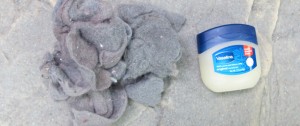
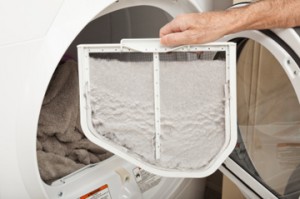
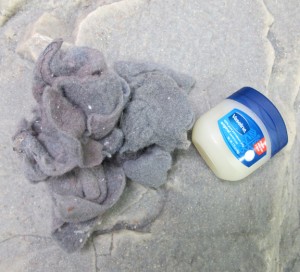
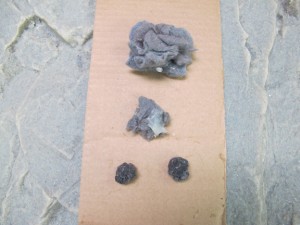
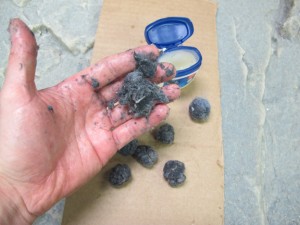
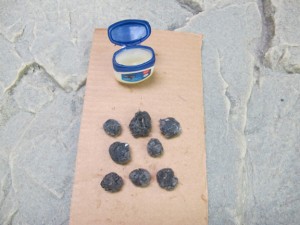
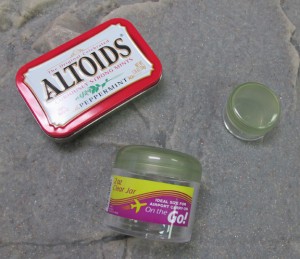
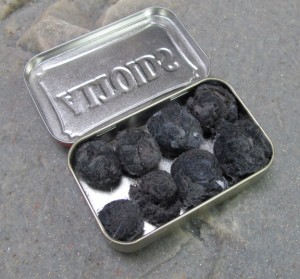
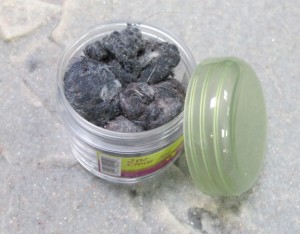
 Follow
Follow




